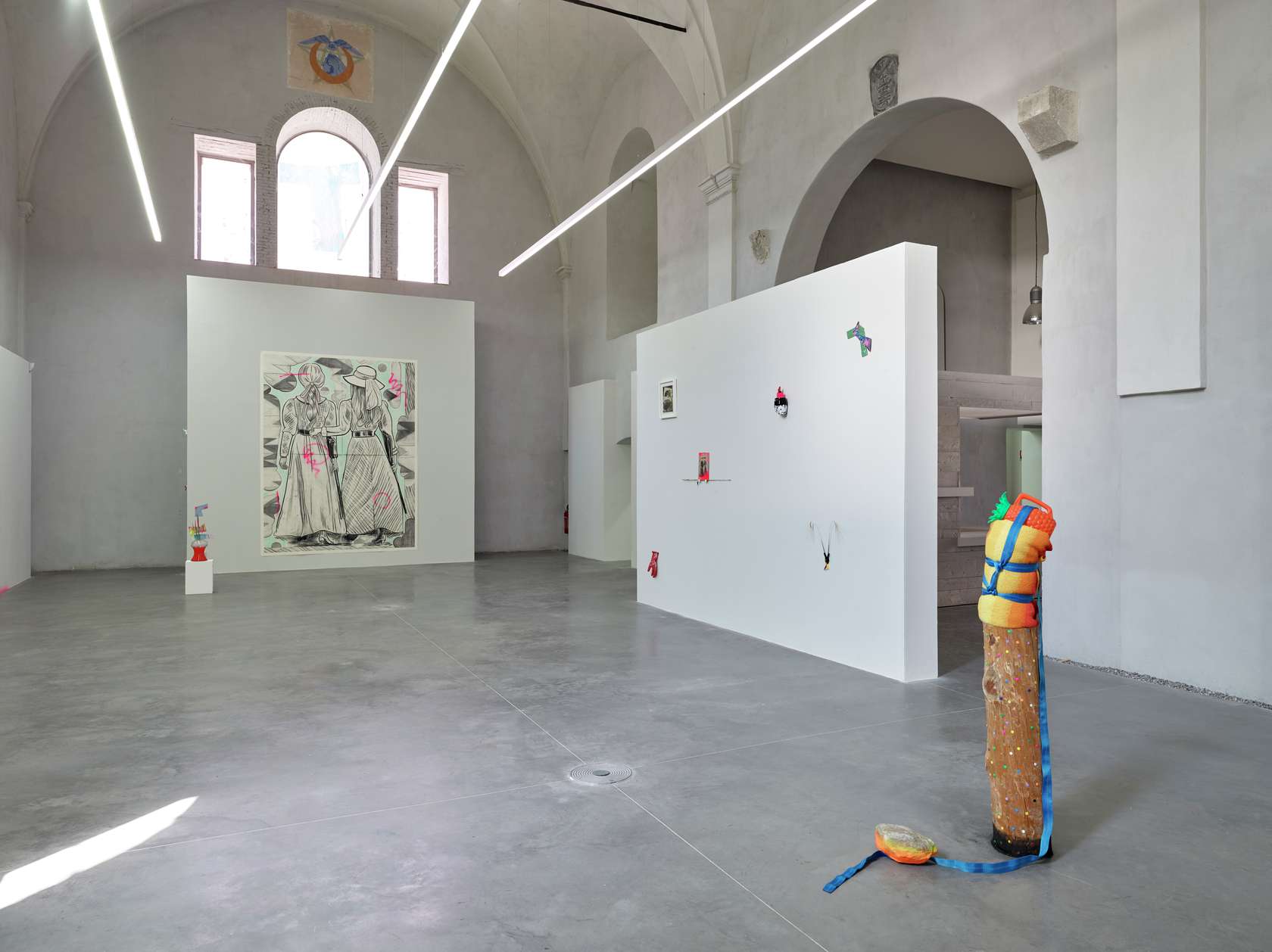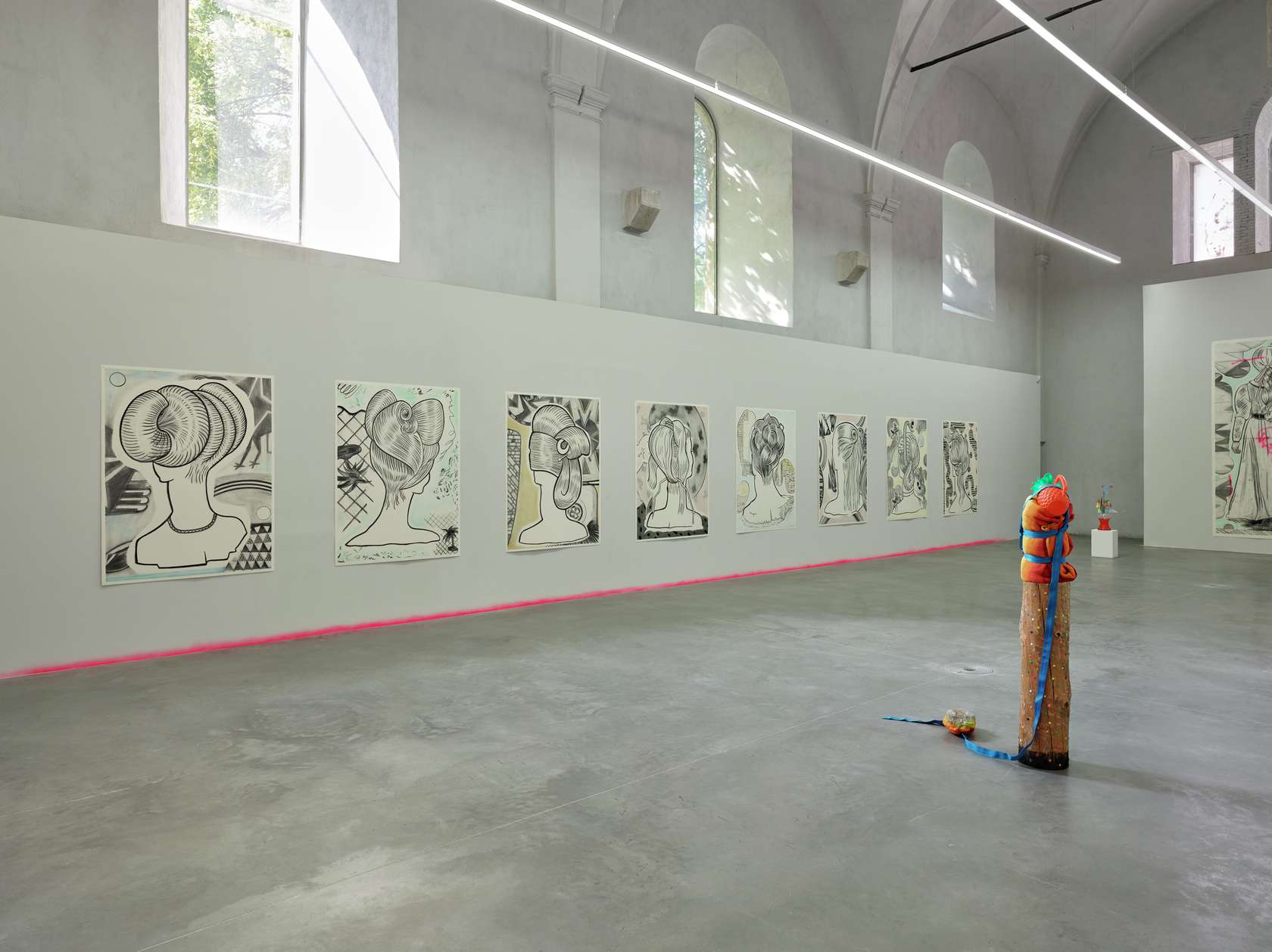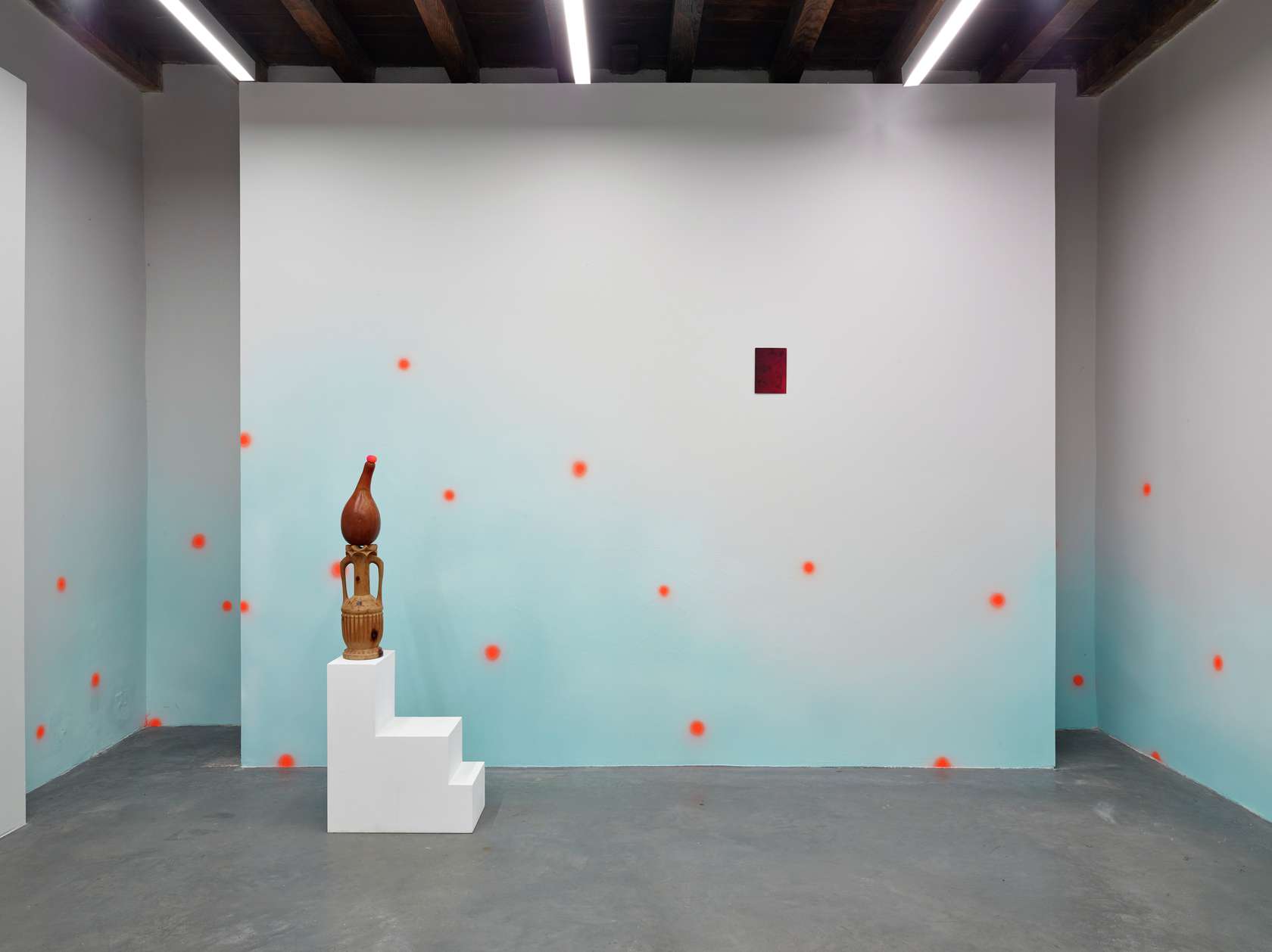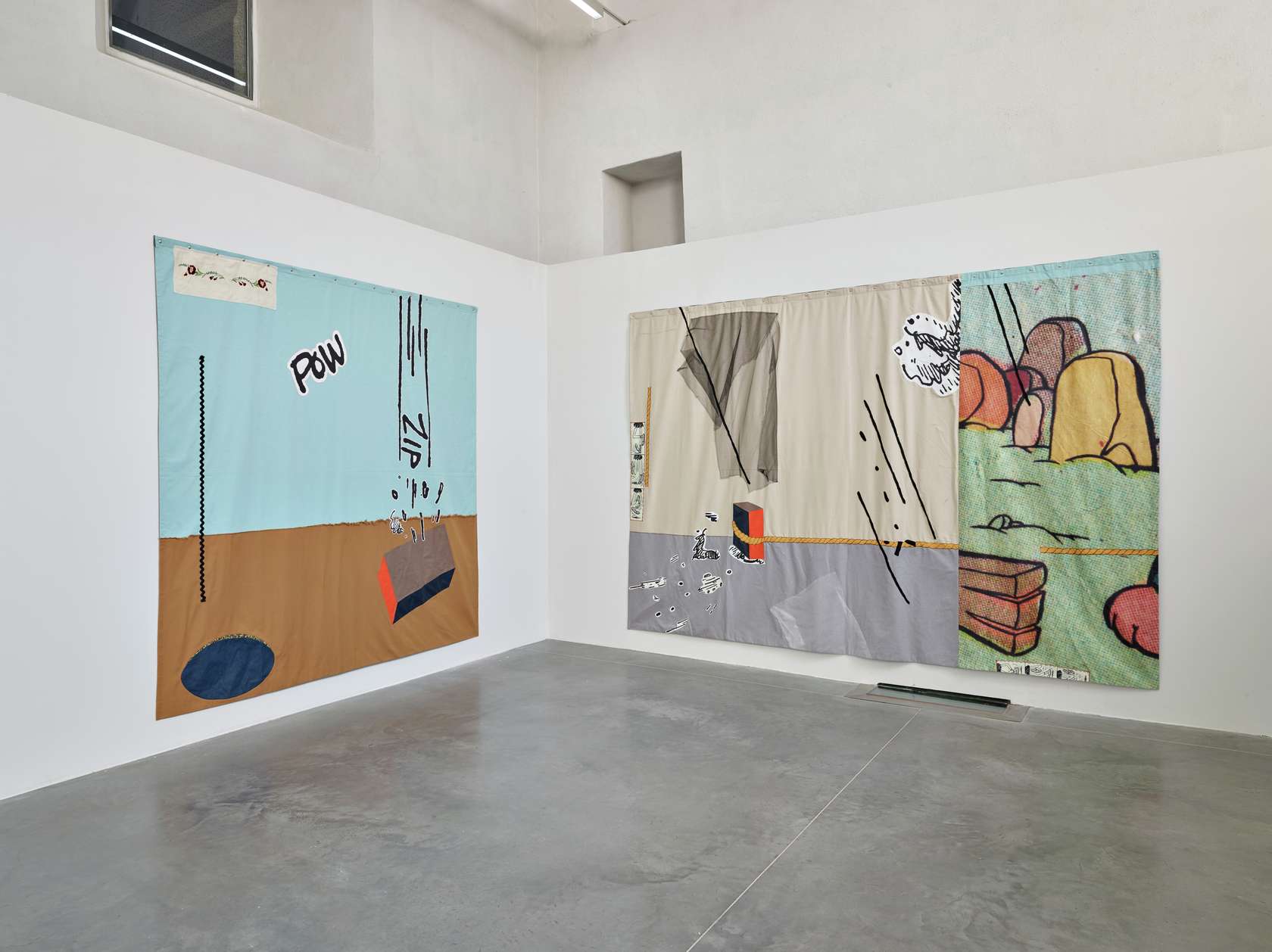-
 1/4
1/4
Hippolyte Hentgen , Marble Canyon
July 5th — September 1st, 2019
Marble Canyon, Les Capucins, Centre d’art contemporain, Embrun (FR) -
 2/4
2/4
Hippolyte Hentgen , Marble Canyon
July 5th — September 1st, 2019
Marble Canyon, Les Capucins, Centre d’art contemporain, Embrun (FR) -
 3/4
3/4
Hippolyte Hentgen , Marble Canyon
July 5th — September 1st, 2019
Marble Canyon, Les Capucins, Centre d’art contemporain, Embrun (FR) -
 4/4
4/4
Hippolyte Hentgen , Marble Canyon
July 5th — September 1st, 2019
Marble Canyon, Les Capucins, Centre d’art contemporain, Embrun (FR)
Hippolyte Hentgen is like a rock band, a duo of two girls. There is Gaëlle Hippolyte on the guitar and Lina Hentgen on the bass. They play something that goes like: Ziiiiiiip! She-bam!!! Their collaboration goes back to the beginning of the 2000’s at the Point FMR (A Paris art space on the canal St Martin). They shared a studio there, in what seemed at the time like the headquarters of alternative culture in Paris. It was in this cultural mix where a joyful blending of genres took place – from music to video, to cinema, dance and the visual arts – that their duo was formed. Hippolyte Hentgen is the third artist, born from the addition of their family names – emerging from that initial Big Bang in a postmodern style, where influences could be leveled out without concern for hierarchy. Their influences can come as much from popular culture as from so-called high culture. In their drawing practice, there is never any creation out of nothing, everything comes from somewhere. There is an origin and a return.
With Hippolyte Hentgen, we see evolving states of the drawings. It is a kind of expansive drawing, it goes beyond the frame and continues on the walls, it articulates itself and develops in three dimensions. We move from large formats on paper made with charcoal and highlighted with touches of color to animated cartoons. Here, the film is understood not as a series of photographs but as a material with plastic qualities: the film reels of historical cartoons are scratched, painted on and scribbled much like the first experimental films. The drawings also take on the form of large collages and assemblages of textiles, sometimes they are suspended like tapestries, sometimes they are spread around the space, playing on architecture. Sometimes they are even rolled up and tied with straps in order to make a volume, a sculpture in-the-round.
For the exhibition Marble Canyon at the Capucins Art Center, Hippolyte Hentgen pursues its exploration of visual culture. We see a mix of influences and visual quotations that borrow from the earliest comic strips from the beginning of the 20th century, or even from the paintings and drawing of Christina Ramberg (1946-1995) which represent women’s complex hairstyles seen from behind. These make us think of 19th century engravings in a western style, of braided hairstyles, whose lines, volumes and upstrokes inscribe themselves in an infinite landscape that is undulating and supple. This interlacing of lines of hair recall the spectacular waves that the conjoined action of water and wind sculpt in the orange hued rock of the Arizona’s Marble Canyon.
Fittingly, it is in the starkness of the American desert that the adventures of Krazy Kat take place. A comic strip by Georges Herriman published between 1913 and 1944 that we see represented in a series of wall hangings entitled B_R_E_E_K. It is a homophonic homage to the brick that Ignatz Mouse throws, one of the three main characters of the comic strip. It is like a kind of fetish accessory that Ignatz often carries with him, and gladly throws at Krazy Kat’s head – perhaps to put his ideas in order. The brick is omnipresent in the large wall hangings of this series, and overshadows the other characters. Pows and Zips flourish here and there on these collages made of fabric. Babbling and onomatopoeias produce an internal rhythm to the composition, they punctuate and detonate. A bit like this: KABOOM!
Karin Schlageter, exhibition curator